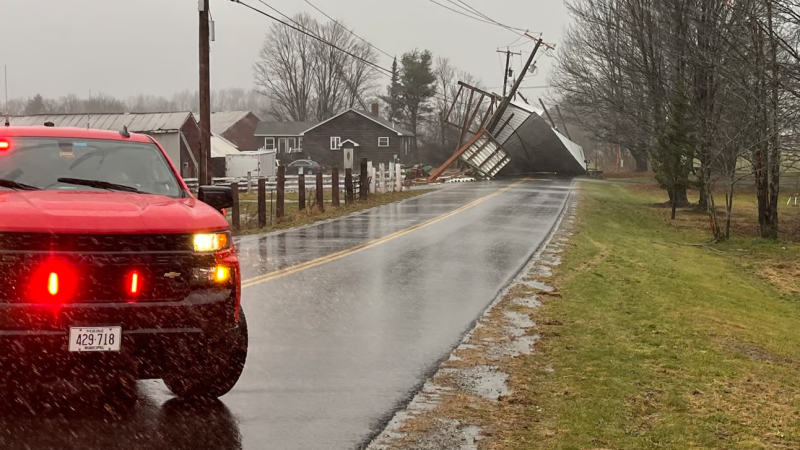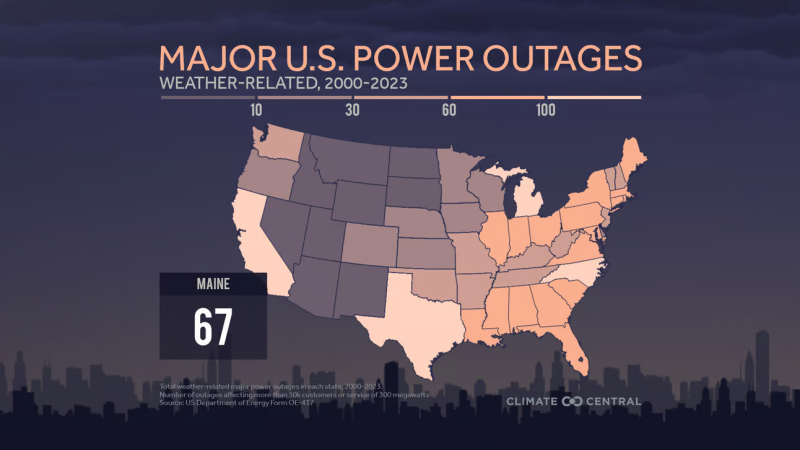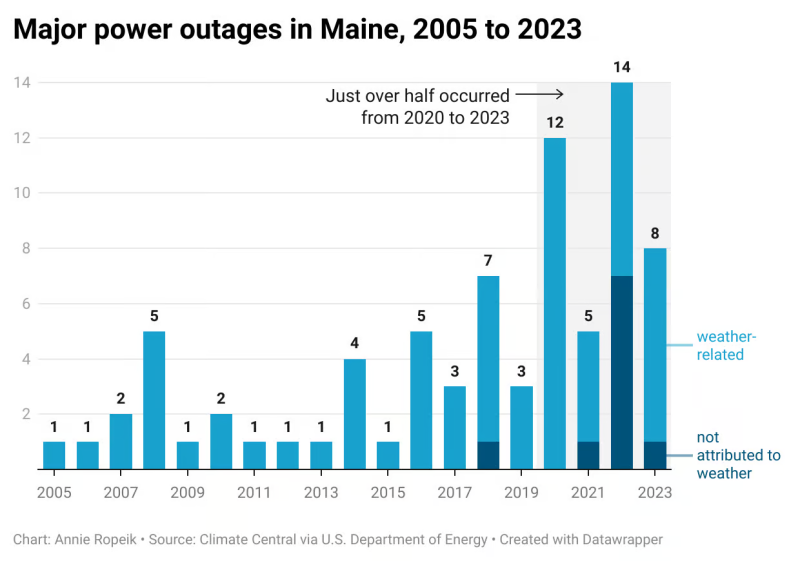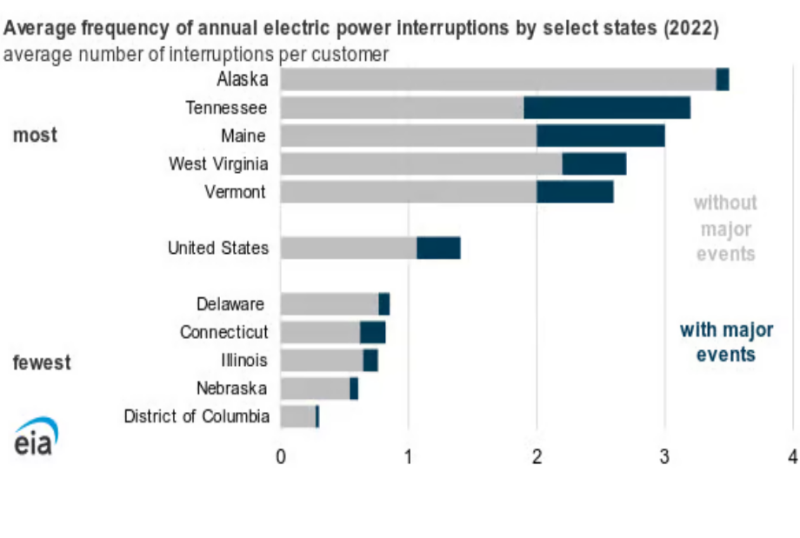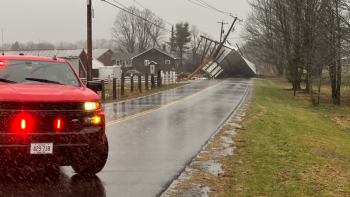Weather-related power outages on the rise
A new analysis shows that more major power outages across Maine, the Northeast and the U.S. are happening as a result of bad weather.
The data from the nonprofit Climate Central shows an aging power grid under pressure as climate change brings more extreme storms in all seasons.
“Major outages are events that affect at least 50,000 customers (homes or businesses) or interrupt service of 300 megawatts or more,” Climate Central says in a release about the analysis, based on federal data from utilities’ required reports of these large outages.
Severe storms (other than tropical cyclones) and winter weather accounted for nearly three-quarters of these outages. Hurricanes and tropical storms accounted for 14% of outages, though they marked some of the longest-lasting interruptions, Climate Central says.
Maine doesn’t make the top 10 when it comes to states with the most weather-related major outages, according to the Climate Central analysis. The top honor goes to Texas, with 210 major weather-related outages in the past 20+ years.
But a quick breakdown of major outages affecting Maine (either alone or along with other New England states) in this same period shows a striking increase.
Data from the federal Energy Information Administration put Maine in the top five for both the longest and most frequent outages in 2022.
The federal data that Climate Central analyzed shows a range of non-weather causes for outages nationwide, from vandalism to technical glitches.
The utility is trying to invest in a more resilient grid. A $30 million federal grant announced last year could help the power system “self-heal” in outages, better containing disruptions before they can spread — part of efforts to “strengthen our state’s electrical system so it can handle increased threats from climate change,” CMP president Joseph Purington said at the time.
Grid modernization takes many forms, from circuit upgrades to better meters and new kinds of time- and technology-based rates, not to mention new poles, wires and tree-trimming approaches.
All of these changes are designed to make it easier to bring more variable, localized renewable energy online, while hardening that more flexible, variable grid to increasing weather extremes.

